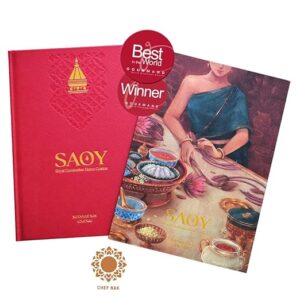
Our ancestors have left behind many folk games for future generations to play during various festivals to create fun and increase mutual relationships. There are many Khmer folk games such as the King Game (Sdach Jang), Teanh Proat, Leak Kon Saeng, Choul Chhoung, Jarb Kon Klaeng Game, etc.
Among all these games, the Kham Peh Kouk or Bite the Jicama Game “ល្បែងខាំប៉ិគក់” is a traditional party game that is popular at festivals, parties or can be used for ice-breaking games at any event. It creates fun and bonding between participants.
Here’s how to set up and play this game:
This game requires materials such as: a jicama (tomato or apple), string (to tie the jicama), scarf (to blindfold). This game is played by two or more people, with a game organizer who is the timekeeper.
Before starting the game, they have prepared to tie the jicama (or other fruit) with a string, hanging from a tree branch or any object they can be hung.
The action of the game is that the player has to walk in front of the hanging fruit without using their hands, and whoever finishes first is the winner. To add to the fun, you can blindfold them or tie your hands behind your back, or play in pairs. The winner is determined by the person who bites the most in the allotted time – that person is the winner!
Gallery
 ល្បែងខាំប៉េះគក់ © Unknown
ល្បែងខាំប៉េះគក់ © Unknown


